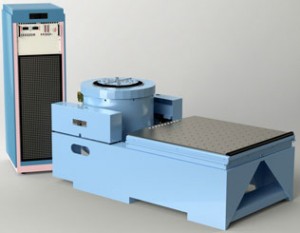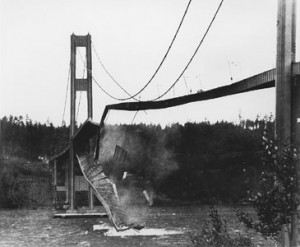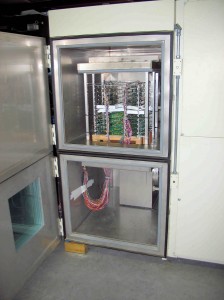DES recently performed package testing per ASTM standard, ASTM D7386-12.
Continue reading ASTM D7386-12 Package Testing →
DES recently performed package testing per ASTM standard, ASTM D7386-12.
Continue reading ASTM D7386-12 Package Testing →
Part 2 – Selecting a Lab and Performing Your Test
If you have not done so yet, please check out Part 1 – Defining your project and Obtaining a Quote.
You obtained quotes from a couple of vibration test labs. Your next task is to select a vibration test lab to perform your vibration test. Your selection should not be based upon price alone. Factors that should affect which lab you choose are capability, cost, timing, location, quality, and other special requirements.
Continue reading Choosing A Vibration Test Lab Part 2 →
Part 1 – Defining your project and Obtaining a Quote
Vibration testing is a very specialized field, not very well understood by many. There are different types of vibration and there are an enormous number of vibration test specifications. Vibration testing equipment is very expensive to purchase forcing many companies to hire a vibration test lab to fulfill their vibration testing requirements. So what should you expect when Choosing A Vibration Test Lab?
Continue reading Choosing A Vibration Test Lab Part 1 →
Mixed Mode Vibration Testing is less common than Sinusoidal and Random Vibration Testing. However, it does have a special purpose for simulating specialized helicopter vibration or vibration from tracked vehicles such as tanks.
The three mixed modes of vibration testing are:
Some common test standards that have specifications for Mixed Mode Vibration Testing are:
Continue reading Mixed Mode: Sine on Random Vibration Testing, RoR, SoRoR →
A vibration resonance occurs when equipment or a product is exposed to an external forced vibration occurring at one or more of its natural frequencies. The resulting product response vibration is amplified and can be huge! Vibration resonances can cause severe damage to products and significantly shorten their life. Examples of vibration resonances can be seen below and in our video page.
A natural frequency is the frequency at which a system will oscillate after an external force is applied and then removed. All objects have a natural frequency at which they vibrate. Most products have many natural frequencies.
Continue reading What is a Vibration Resonance? →

Vibration of a mechanical system can be descried as an oscillatory motion about an equilibrium point. Certain vibrations of mechanical systems can be considered desirable, such as in musical instruments like a tuning fork or guitar.
However, often times vibrations of mechanical systems are undesirable, producing wasted energy, unwanted noise and catastrophic failures. Therefore it is critical during the product design phase that engineers are able to accurately characterize the vibration response of the system in order to ensure a safe and reliable product for their customers. We accomplish this through comprehensive vibration testing services.
Continue reading Vibration Response of Products →
Shock testing with long durations can be a challenging endeavor. DES recently had to perform a 35G peak, half sine shock with a 50 millisecond duration. The video below shows this shock test being performed.
This sounds like an easy shock to carry out because a peak of 35G is low compared to many shocks. However, this is a difficult shock to perform because 50 milliseconds is a long duration. Most typical shock durations are less than 20 milliseconds.
A half sine shock impulse has the shape of a half sine wave. More details can be found elsewhere on our blog, in an article titled “Classical Shock Testing“.
Continue reading Shock Testing: Long Duration Half Sine Shock →
 Delserro Engineering Solutions (DES) was proud to be a part of the recent Orion rocket that launched on December 5th 2014. DES was contracted by a local manufacturer to help qualify their product designs for use on Lockheed Martin’s Orion rocket. DES’s role was to perform specialized shock testing on their products.
Delserro Engineering Solutions (DES) was proud to be a part of the recent Orion rocket that launched on December 5th 2014. DES was contracted by a local manufacturer to help qualify their product designs for use on Lockheed Martin’s Orion rocket. DES’s role was to perform specialized shock testing on their products.
Some of the shock levels were over 3200 G’s to simulate the rugged launch environment. Both the local manufacturer and Lockheed Martin Corporation were pleased with the testing. Their products successfully passed the shock tests at DES. They acknowledged DES’s role and informed DES that their products operated successfully during the launch!
What sets DES apart from other labs is our in depth experience and technical capability to understand and reproduce the most complicated vibration and shock profiles. DES continues to perform the most complex vibration and shock tests on products that are used in outer space, rockets, missiles, automotive & truck environments, military environments, hospitals, etc.
Temperature cycling testing is another method of accelerated life testing for products that are exposed to temperature variations during use in normal operation. The temperature variations can be a result of self heating for products that are repeatedly turned on and off, or can be the result of cyclic environmental changes — such as temperature variations from day to night — or other causes.
 These repeated temperature changes can result in thermal fatigue and lead to eventual failure after many thermal cycles. Accelerated life testing can be performed by cycling the product to high and low temperatures that exceed its normal use temperatures.
These repeated temperature changes can result in thermal fatigue and lead to eventual failure after many thermal cycles. Accelerated life testing can be performed by cycling the product to high and low temperatures that exceed its normal use temperatures.
It should be noted that temperature cycling may also be referred to as thermal cycling or thermal shock testing. However, some test standards, such as MIL-STD-883, make the distinction between temperature cycling being performed as air to air testing and thermal shock being performed with the samples transferred between liquids. This article deals with testing performed using an air to air thermal cycle chamber.
Typical temperature cycling equipment consists of at least one hot chamber and one cold chamber. The test samples are automatically transferred between the two chambers by an elevator-type mechanism. It is also possible to perform temperature cycling in a single compartment chamber where the temperature is ramped between hot and cold. This generally produces a slower rate of temperature change compared to the two chamber method.
Continue reading Temperature Cycling Testing: Coffin-Manson Equation →
 The brilliant scholars at CalPolyTech have diligently evaluated and assessed the Fundamentals of Vibration Measurement and Analysis in a way that even lay persons can get a grip on the fundamentality of measuring vibrations for differing purposes and projects. This reference for comprehending the physics behind the elemental vibration measurement and analysis will prove invaluable to the product managerial departments, industrial engineers, developers, and all with decision making power in the testing or product development field.
The brilliant scholars at CalPolyTech have diligently evaluated and assessed the Fundamentals of Vibration Measurement and Analysis in a way that even lay persons can get a grip on the fundamentality of measuring vibrations for differing purposes and projects. This reference for comprehending the physics behind the elemental vibration measurement and analysis will prove invaluable to the product managerial departments, industrial engineers, developers, and all with decision making power in the testing or product development field.
See Sinusoidal and Random Vibration Testing Primer for a more technical explanation of sinusoidal vibration testing.
See Sinusoidal Vibration Testing to learn more about the different types of sinusoidal vibration testing.
Continue reading Sinusoidal Vibration Basics →